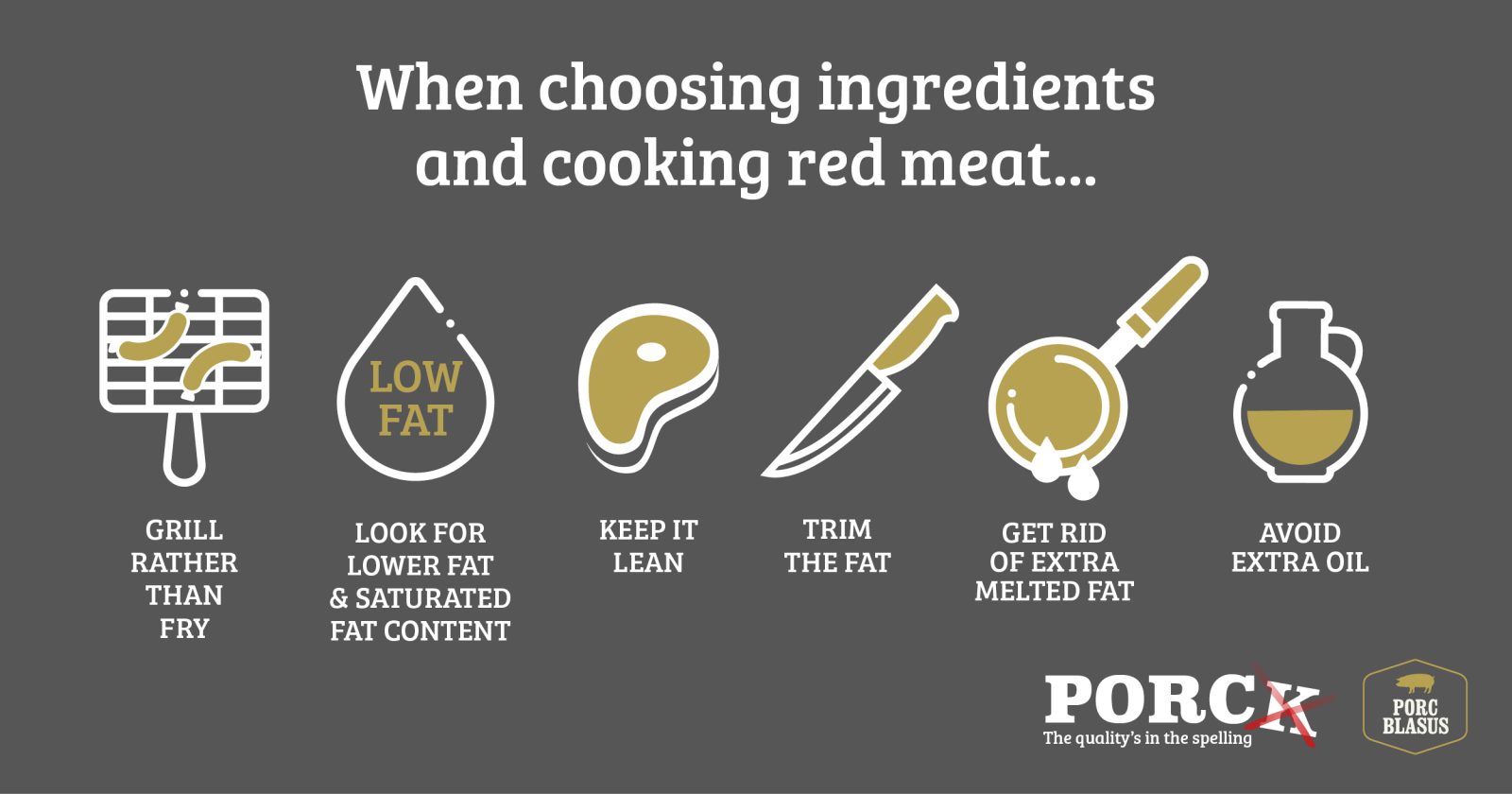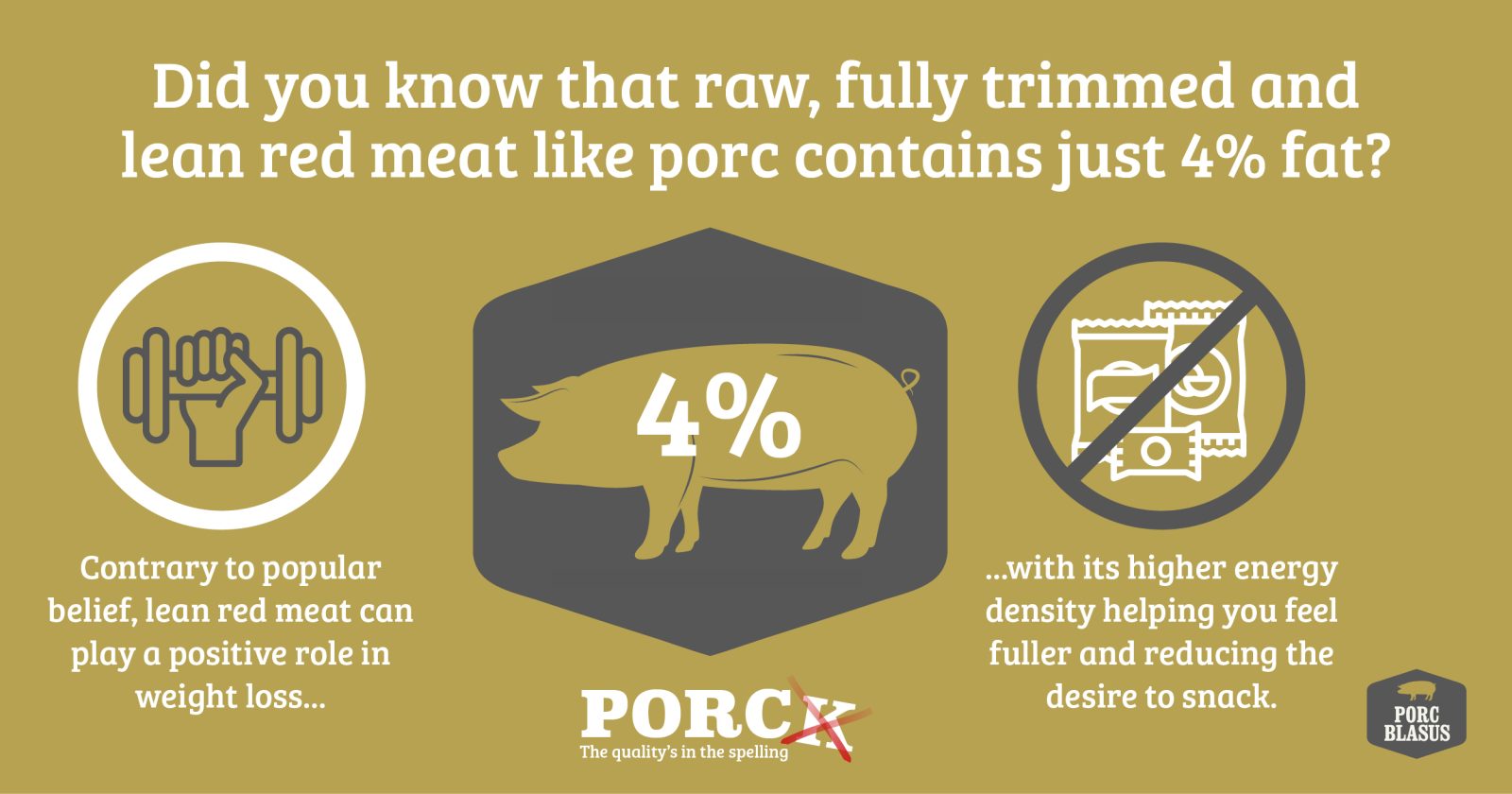Healthy cooking know-how
From chunky porc chops to hearty hotpots… with a little know-how, you’ll be amazed at how many nutritious and healthy meals you can prepare for you and your family using Porc Blasus.
Here are some helpful tips:
- When preparing and cooking red meat as part of a healthy balanced diet, it is worth adopting the following methods: grill rather than fry; trim off any fat; avoid using additional oil and get rid of extra melted fat.
- When buying red meat, look for lower fat and saturated fat content.
- Stir-frying is also a good way to cook lean red meat as none or very little oil is added during cooking.
- For extra taste and succulence, marinated meat takes it to another level and helps tenderize tougher cuts of meat.
- When making casseroles or stews you can skim off any fat on the surface of the sauce or liquid before serving.
Recommended intake
Portion control is vital for a healthy and balanced diet.
The NHS recommends eating up to 70g of cooked red and processed meat daily, which is just shy of 500g over the course of a week. It’s recommended that we try and eat lean red meat and limit our intake of processed meat such as bacon, ham, salami and smoked meats.
Choosing the best cooking method
Understanding a little about the composition of meat will help you choose the best method of cooking a particular cut – do you flash cook it or slow cook? – as it will make all the difference to the flavour and tenderness.
Generally the animal’s forequarter tends to do more work, so the cuts we get from there normally have a tougher texture and can contain more fat, which suits a slower, moist cooking method to enhance the flavour and tenderness. This includes cuts such as the collar (neck), shoulder and hock.
Some of the cuts we get from the middle or hindquarters tend to do less work and are generally more tender. This includes the loin cuts such as tenderloin, loin steaks, chops and also diced leg. These suit quick cooking methods such as grilling, frying, BBQ and griddling. Larger cuts such as leg joints, loin rack are more suited for dry roasting, whilst the shoulder, belly and spare ribs suit slower cooking methods.
Visit our cuts guide for more detailed information.

